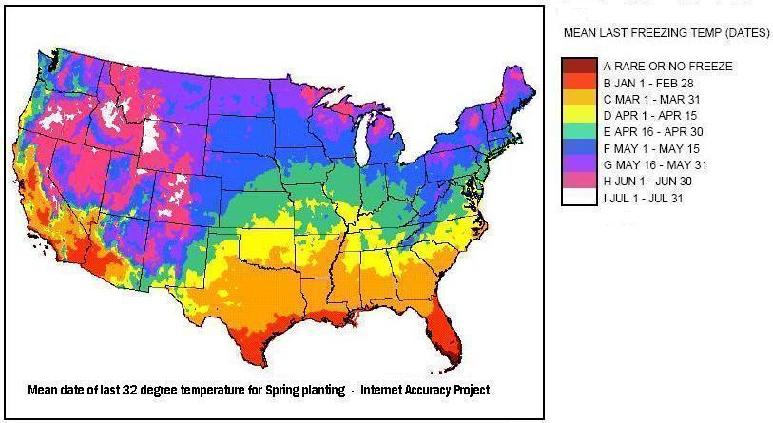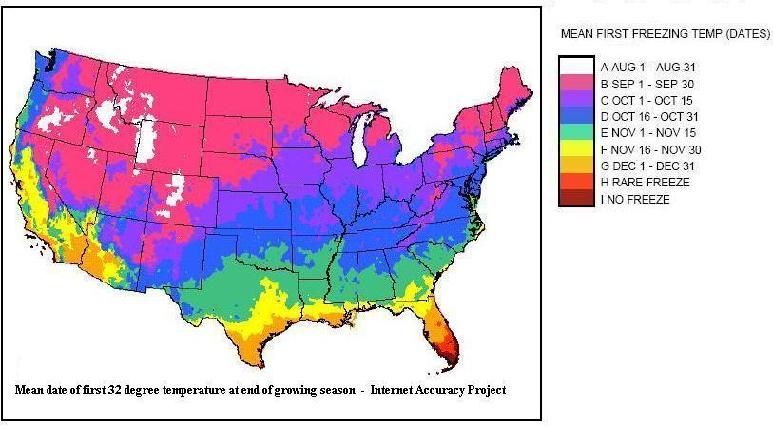Finding Your Frost Free Dates

Choose the Best Regional Version with our Frost Date Maps
To select the best regional version for your local climate, you should know your average frost free dates. Remember, average means that half of the the time your last frost date will fall before this date–and half of the time it will fall AFTER this date. It is not the last possible date of frost. If you are not sure of your local frost free dates, you can use our frost date map. This map has been compiled from average first and last frost date maps from the Internet Accuracy project (scroll down to see original maps).
Frost is also effected by the proximity of water, wind shelter, altitude, and microclimates. A stone wall or nearby pavement can create a warm bubble, and a perennially shady spot (like a conifer grove) could be in a colder zone than the rest of your garden.
Stretch the Season
You can start seeds inside under lights or in a greenhouse, and have them ready to go in the ground when the time and temperature are right.
Don’t be afraid to plant beyond the usual times if it looks mild, or to use row covers and cold frames to extend the season.
Use the micro-climates created by overhead cover, ground slope or bodies of water to plant marginal crops that need a warmer spot.
These are the approximate areas recommended for each of our different versions. Extremes of altitude, temperature or humidity may require some adjustments of planting dates.
- Short Season (May 15 – Sept 30, zones 3, 4, 5, 6)
- Eastern time in print; Pacific, Central, or Eastern in digital
- Medium Season (April 15 – Oct 15, zones 5, 6, 7, 8)
- Eastern time in print; Pacific, Central, or Eastern in digital
- Long Season (March 1 – Nov 15, zones 7, 8, 9, 10)
- Pacific time in print; Pacific, Central, or Eastern in digital
These frost date maps from accuracyproject.org will give you a general idea of first and last frosts in your area. Click on the image to view on original website.
Other ways to find your frost dates:
- Ask your neighbors, they may know about microclimate effects in your area
- Consult the local agricultural extension or master gardeners program
- Search weather.com to find weather data by zip code (US only). Type in your zip code, weather related to Lawn and Garden, and look for Monthly Averages and Records.
- Look up your frost data on Dave’s Garden—very specific!
Also consider:
- What are the weather patterns for the year? Will there be an early spring? This may mean you can adjust your planting dates as well.
- If you are on the border line between two versions, then what is your particular gardening style? Are you the type who likes to brag about the first tomato of the season? Do you start your own seedlings inside so they will be ready as soon as the weather warms, and use season extenders like cold frames or row covers? (You are going to love this calendar!) If you are one of these type gardeners, choose the longer season, and be ready with some protection on those occasional early and late frosts.




